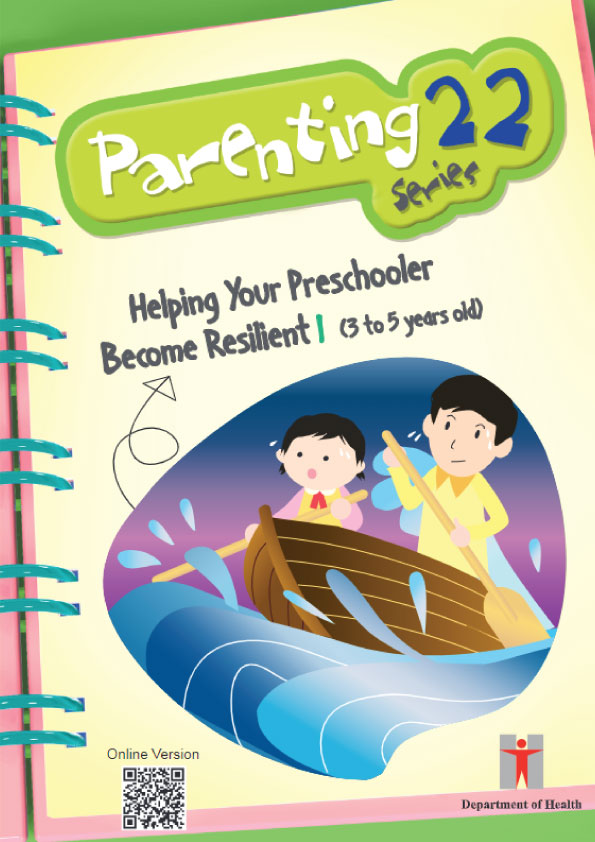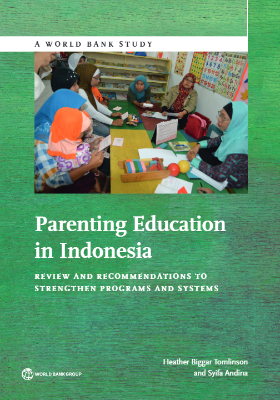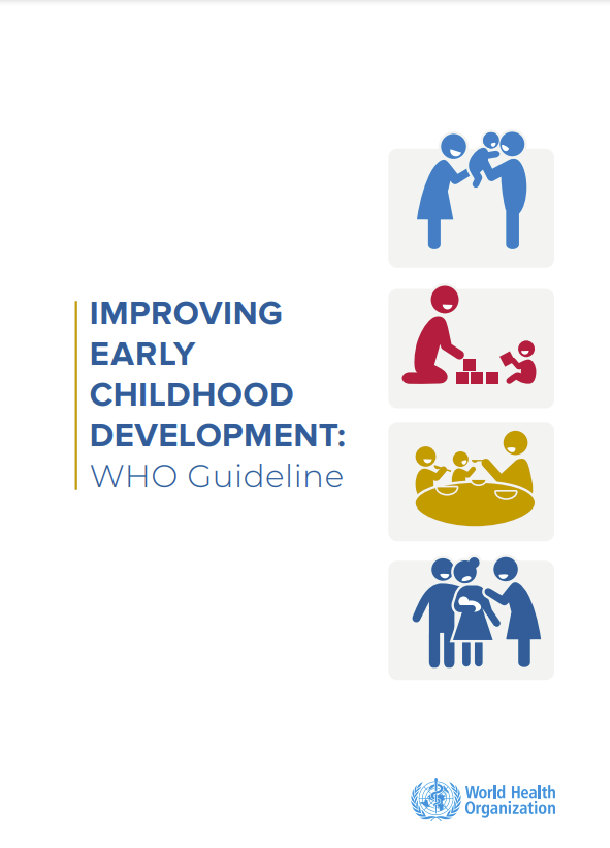The Importance of Resilience
Difficulties are inevitable in our lives. Some children may become irritable or depressed as a result, while others are able to adapt to or recover from adversity rapidly. The latter illustrates a positive adjustment process commonly known as resilience. Children, who demonstrate resilience generally remain proactive and optimistic in the face of adversity. Research has indicated that children showing resilience are competent, confident, healthier, having greater academic achievement and are more satisfactory in their studies in school.
You can help your preschooler to become resilient by building up qualities within herself and enhancing factors in her environment. The key qualities within a child that facilitate resilience are self-esteem optimism, hope, communication and problem-solving skills. Positive parenting, support and cooperation with school are equally important environmental factors.
Fostering Qualities within Your Child
Self-esteem
Self-esteem refers to the sense of worthiness one feels about oneself. High self-esteem serves as a buffer against demoralization following hardship. On the other hand, children with low self-esteem may have their confidence stricken by failure and rejection. You can help your child develop self-esteem by doing the following:
- Showing love & giving attention to your child
- Show your affection and give attention to your child by nonverbal (e.g. smiles, hugs, kisses, pats) as well as verbal means (e.g. “I always love you, my little darling”).
- All children misbehave sometimes. Show disapproval of your child’s inappropriate behaviour (e.g. “Fighting is incorrect”) rather than the child per se (e.g. “You are terrible”).
- Accept your child as who he is so that he can learn to accept himself.
- Nurturing your child’s strengths
- Self-esteem is also developed when the child recognizes himself for having personal strengths through your positive feedback.
- Recognize your child’s interest and strengths, e.g. playing soccer, reading, being a good helper, etc.
- Set a realistic and achievable goal in developing his strengths to the full potential. Start with a level that matches your child’s capability. For example, appreciate your 3-year-old child’s enthusiasm in scribbling rather than expecting him to draw a figure with details. This could guarantee a rewarding start and your child is more likely to continuously achieve his full potential.
- Developing your child’s positive self-image
- Your constructive evaluation of your child will facilitate his development of a positive self-image.
- Grasp every opportunity to express your appreciation right after your child shows any positive behaviour or achievement. The appreciation should be specific, e.g. “Thank you for putting away the toys after playing “
- Review together with your child, what he has accomplished every day – no matter how small it is.
Optimism and Hopeful outlook
The damaging effect of hardship can be minimized when children view setbacks in an optimistic way. Optimistic children think positively and have a sense of mastery. They do not easily give up because they think their actions will influence the outcome of an event. Besides, children with a hopeful attitude know their direction and have motivation to thrive even in difficult time. You can help develop your child’s optimism and hope in the following ways:
*Cultivating positivity
| Help your child view setback as: | Don’t say: |
|---|---|
|
|
|
|
|
|
Your words will have much impact on the positivity of your child. When your child has completed a job or made an accomplishment, never be mean to her by saying something like, “Don’t be so excited!” You just made it this time“, “You are only good at drawing” or “You’re just lucky.” Instead, give her appreciation and encouragement, “You made it!” or “You are so talented at drawing.”
- Promoting a sense of mastery
- Choose toys that are appropriate to your child’s level of development. Toys and tools that your child has control over and will respond to actions are mastery-promoting. They facilitate your child’s understanding of causal relationship between her actions and outcome. For example, the one year old will enjoy musical notes coming out from their pressing of a button; and the four year olds will be at ease in using scissors.
- Children are full of curiosity. Often, they are imitating adult’s behaviour before you think they are ready to learn. Once your child shows interest, encourage her to participate in self-care activities such as feeding and dressing.
- Offer choices to your child within a reasonable limit (e.g. two or three choices), such as choices of her clothing, snacks, toys and books to read.
- Familiarize your child with goal-setting. The goal should be specific and achievable, eg. “Let’s finish the drawing before watching TV”.
- Assist your child to achieve the goal step-by-step. For example, guide her to complete the picture, “Do you want to draw anything next to the dog? Would you like to add some more colours?” Encourage and praise her for putting in effort. “It’s almost finished. What a colourful picture!”
- Nurturing hope
- Act as a role model to your child and demonstrate a hopeful outlook on life, e.g. “I can’t find the right size T-shirt for me in this shop, I think I can get it in another shop”.
- Read stories conveying the ideas of hope and perseverance with your child such as ‘The Tortoise and the Hare’ and ‘The Little Hero of Holland’.
- Change your child’s discouraging thoughts to an encouraging and empowering one. For instance, when your child said, “I always fail to earn stickers from my teacher”, you can respond, “You did not get a sticker from your teacher today. It’s OK! Come on, cheer for yourself! Try again tomorrow!”
- Help your child to learn from mistakes or setbacks. Let her generate the solutions first before you guide her for alternatives. For example, you can guide her to identify the causes of failure and then ask, “What can you do differently next time in order to get the reward?”
Communication and problem-solving skills
Children with communication and problem-solving skills are able to overcome adversities. The governing principles are:
- to encourage your child to express himself and
- to help him solve the problem on his own instead of fixing the problems for him.
- Nurturing communication skills
- Encourage and facilitate your child to express his thoughts and feelings. For example, “Since you lost your teddy, you have been really quiet. Come on, tell me how you feel?” If your child keeps silent, ask him, “Are you feeling upset about your missing teddy? Tell me more about it.”
- Discourage expression through undesirable behaviours such as whining, tantrums or aggression. Give consequences such as taking him to quiet time. Find opportunities to teach him how to express his emotions in a socially acceptable way some other time when both of you are calm.
- Remind and practise turn taking in conversation e.g. “OK! I will listen to you first and then it will be my turn to speak.”
- Encourage your child to practise communication skills through make-believe play. For example, when he plays the role of a doctor, he can practise listening and questioning; when he plays the patient role, he can practise expression of feelings.
Leaflet 13 in this Parenting series explains the development of communication skills while leaflet 16 describes behaviour management in more details.
- Fostering problem-solving skills
- Arouse interest in solving problems and taking challenges through games, e.g. simple jigsaw puzzle, model railway building and make-believe play.
- Help your child identify and articulate the problem. For example, when you read ‘Three Little Pigs’ to your child, encourage him to think, “Why is the first little pig in danger?”
- Stimulate your child to generate as many solutions as possible.
- Help your child to choose a solution. Provide a couple of options if it is difficult for him to decide, e.g. “Do you want to use a pencil or a felt pen to draw the picture?”
In sum, you can enhance your child’s resilience by helping her to face adversities and solve problems with positivity, optimism and confidence. Having discussed on the enhancing factors within a child, you may read on leaflet 23 Helping Your Preschooler Become Resilient II in the Parenting series for environmental factors that foster resilience in your child.











